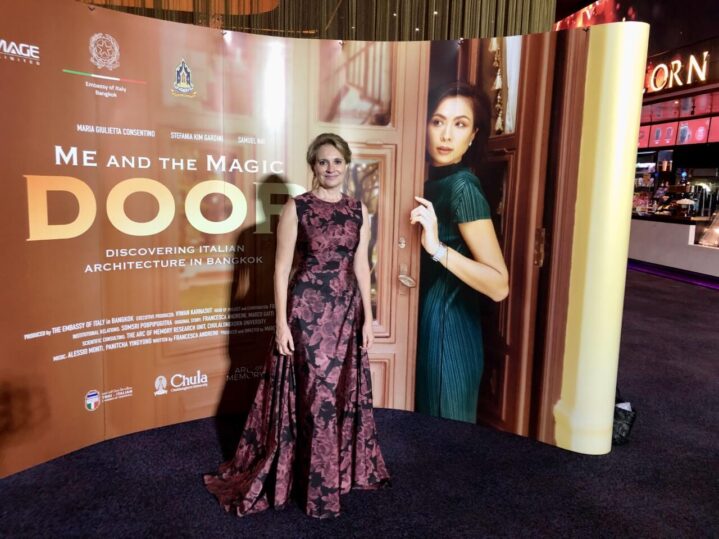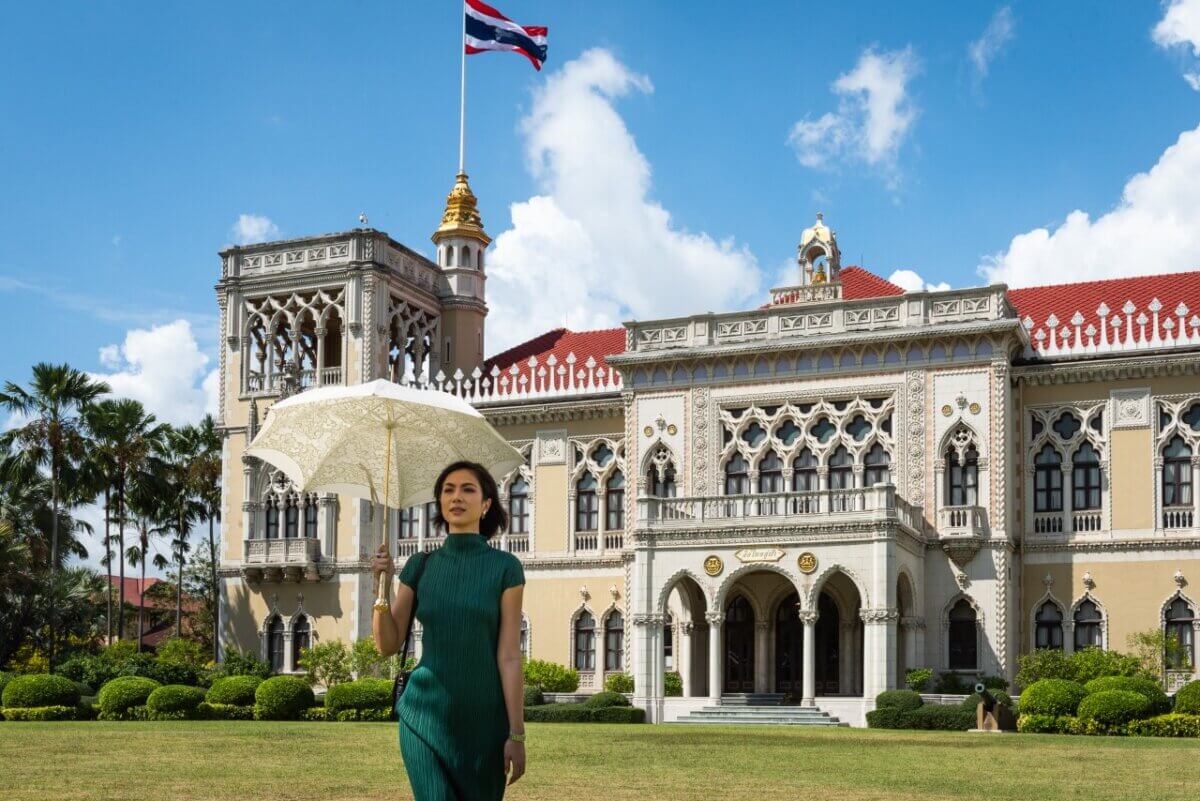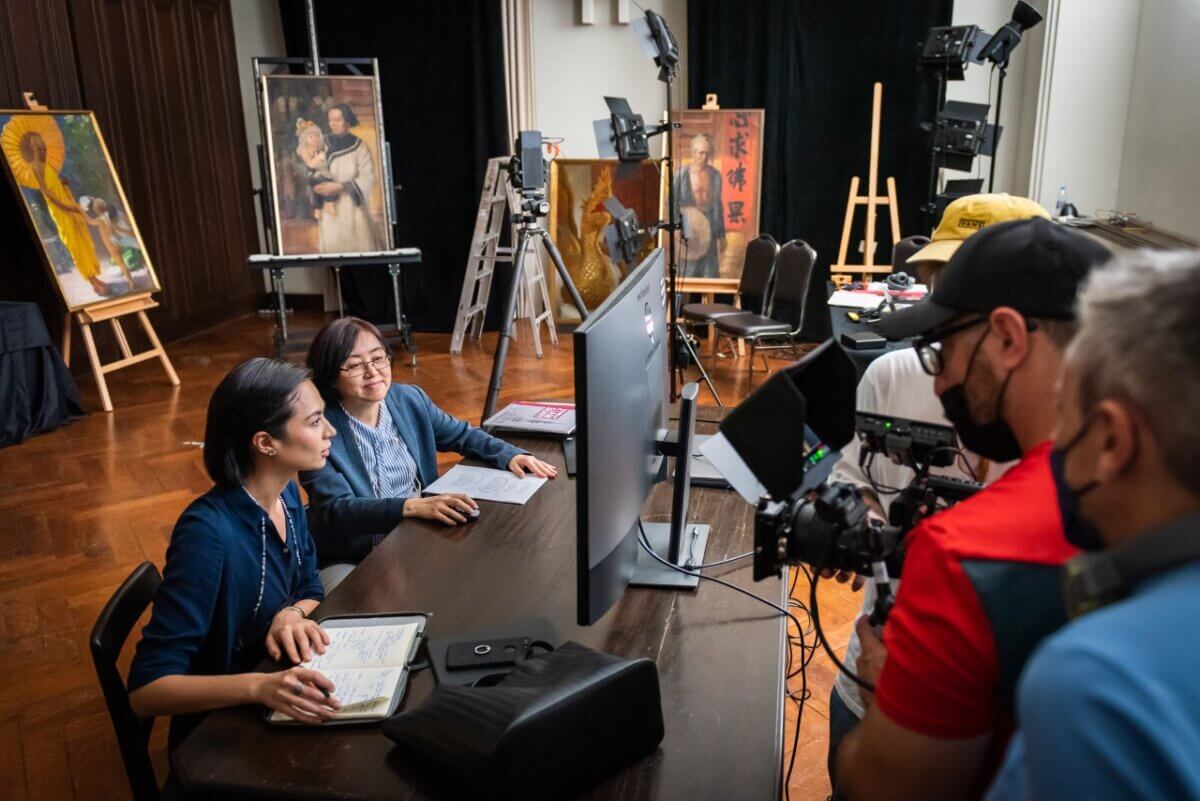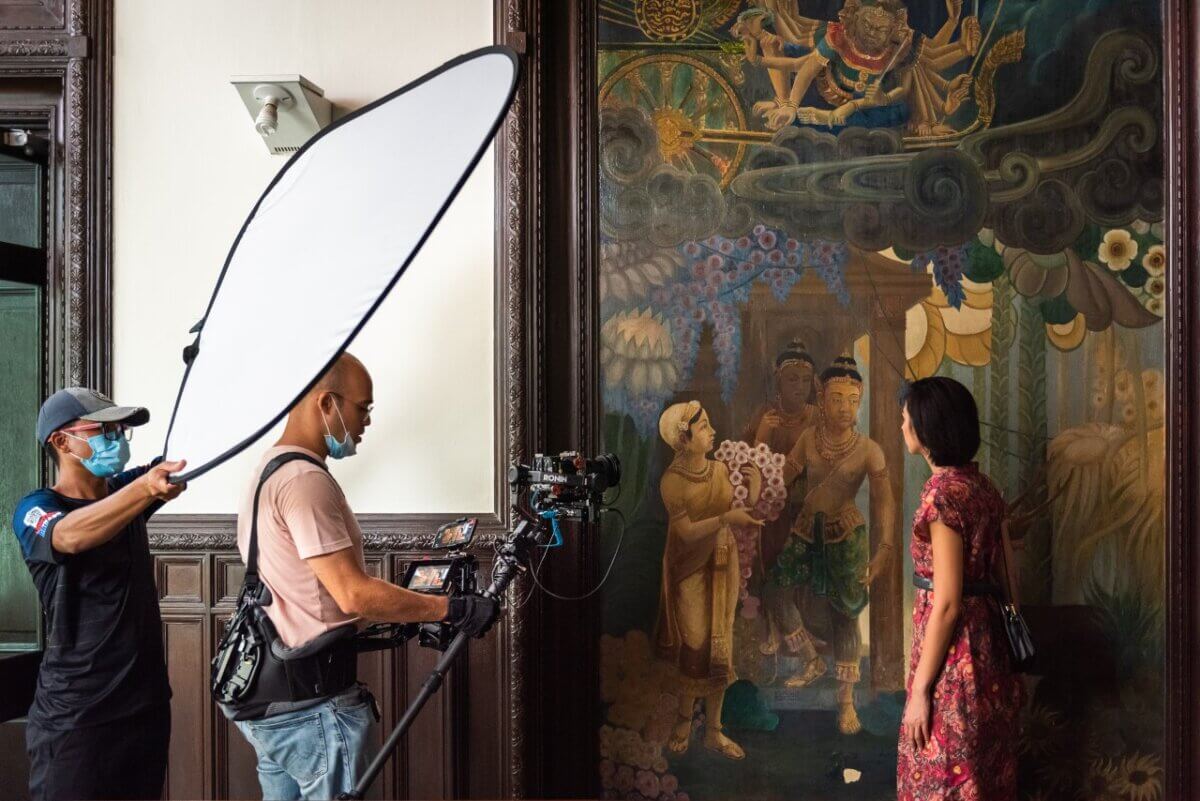
ME AND THE MAGIC DOOR – Discovering Italian Architecture in Bangkok
“ME AND THE MAGIC DOOR – Discovering Italian Architecture in Bangkok”, a documentary film, was recently released by The Embassy of Italy in Thailand, together with the Thai-Italian Chamber of Commerce and Max Image Co., Ltd., with the aim of promoting artistic and cultural cooperation among Italy and Thailand.

The documentary unfolds from the perspective of Fai, a Thai-Italian character who travels to Thailand to write an article about the Italian cultural heritage in Siam. The audience can follow Fai’s journey and her discovery of many iconic places such as Ananta Samakhom Throne Hall, inside Dusit Palace, Baan Norasing (Government House), Baan Phitsanulok and several other impressive buildings created by Italian architects and decorated by Italian artists, under the guidance of Thai personalities of the time, during the late 19th and early 20th Centuries.
H.E. Mr. Lorenzo Galanti, Italian Ambassador to Thailand explained, “After the reunification of Italy in 1861 the Kingdom of Siam established friendly relations with Italy. His Majesty King Chulalongkorn (Rama V) and King Vajiravudh (Rama VI) were profound connoisseurs and admirers of Italian art and culture. Therefore, several construction projects in Bangkok were assigned to a group of Italian experts, creating the conditions for a highly successful artistic cross-fertilisation.”

Directed by Marco Gatti, written by Francesca Andreini and starring Stefania Kim Gardini, Giulietta Consentino and Samuel Nai. Expat Life sat down with Madame Francesca, spouse of the Ambassador of Italy to Thailand to learn more about this inspirational story.
What inspired this film project?
Unlike other countries, where European architecture is present as a result of a history of colonialism, here in Thailand it was the result of an Italian immigration of high professional quality. Under King Mongkut (Rama IV) some Italian entrepreneurs had already opened flourishing constructions and import businesses in Bangkok, but the real blossoming of Italian architecture came under King Chulalongkorn (Rama V) and his son, King Vajiravudh (Rama VI). The two monarchs had great admiration for the culture and art of our country and encouraged the arrival of young professionals, as well as established figures, from Italy to work on the modernisation of Bangkok.
These Italian professionals were contracted to build palaces that were ambitious and innovative at the time. Their quality and aesthetic value are such that today these buildings are still perfectly preserved and several among them host Royal or governmental institutions. Italian engineers, architects and artists found in what was then called Siam a welcoming, friendly country that granted them an opportunity for professional and artistic expression. Many of them spent their entire professional lives in Siam, and some became relevant in the Kingdom’s cultural scene.
It was a very beautiful story, and the Italian Embassy decided to tell it, as a tribute to the extraordinary professional and artistic skills of our compatriots, as well as a testimony to the excellent and long-standing relations between Italy and Thailand.

With this documentary project, you received a lot of support from many organizations, who are the key ones that made it happen?
We are very grateful to the Thai institutions, which not only allowed us to shoot the documentary, but accompanied us through all stages of the filmmaking process. I would like to express my deep gratitude to the Royal Household Bureau, which graciously provided us with permission to show some Royal palaces, such as Anantha Samakon and Saranrom Palace. We are also very grateful to the Office of the Prime Minister for allowing us to film some beautiful scenes outside and in the main lobby of the Government House and Baan Pitsanulok, the official Prime Minister’s residence. The Ministry of Foreign Affairs followed us all the way through the preparation of the documentary, helping us to understand what bureaucratic processes we needed to follow.
The contribution of Chulalongkorn University, and in particular of Professor Neungredee Lohapon, who formed the scientific committee for the documentary, was also invaluable, as she verified through original documentation the accuracy of the data we provided. Professor Neungreudee, and the Arc of Memory research Unit, led by her, also made available the paintings we showed in the film. The Ministry of Culture kindly granted its patronage and provided a valuable final check on the contents of the documentary. Last but not least, I would like to mention the contribution of the Thai film Bureau, which supervised all the filming, allowing us to work in a peaceful and fully cooperative atmosphere.

What obstacles did your team encounter and how were they overcome?
The main obstacle was working during a pandemic.The various preventive measures obviously complicated our work and increased the costs. Due to Covid we had to give up filming at a location that was very important to us: Museum Siam. It was closed for a few days due to a case in their staff, and, being on a tight budget, we could not reschedule the filming on an extra work day.
The shooting was a race against time: we had an extremely tight schedule! The film is smooth, entertaining, it is not a classic documentary as it combines the educational part and a fictional story. It is particularly exciting and yet, it is extremely rich in information. I am sure that while the audience watches it, they cannot imagine that it was shot in only two weeks!
The other big obstacle was the heat. The shooting was almost entirely outdoors, and you can easily imagine how much effort it cost to be outdoors for a whole day (from sunrise until sunset). Last but not least, there was the problem of the actors’ makeup, which was flaking off because of the heat!
Different from writing a book, what lessons have you learnt in terms of experience with this adventure?
Writing fiction and writing screenplays are two completely different jobs. When you write a screenplay you can only use images, you cannot describe anything you cannot see on the screen, so you have to create images that can also reveal what is not said, such as people’s moods, or their past history. For a fiction writer like me, it can be a real challenge!
It was not the first time I had tackled this terrain though, because I had already written several screenplays many years ago. A screenplay that I co-wrote, Senza me, received state recognition of cultural interest in 2010!
I enjoyed reacquainting myself with an old passion of mine.
Any fun or heartwarming moments you recall during the filming?
There were countless hilarious episodes that made us laugh so much during the shooting. For example, when the actors could not remember their lines and made funny expressions. In general, I cherish the memory of the very special atmosphere on the set: we all were working under a lot of pressure but with extreme passion and the collaborations between us was total. There were countless problems to solve on the spot: the light not being the right one, a sudden rainfall, a location that was supposed to be free being suddenly occupied… but these difficulties made our collaboration even more intense!
A particularly funny situation was our shooting at Mandarin Oriental: there were guests in the rooms above the halls where we were shooting so we had to whisper the directions while we were working, and that created very funny moments. Imagine a typical set, where everybody shouts instructions, but having to work in a whisper or using mimics: what a comic scene!
The most intense moments were perhaps when we looked at each other, at the end of the day, tired, but with satisfied faces for the work we had done.

What message do you want the audience to take home after seeing the movie?
The first two screenings, organized by the Embassy, were very well received. Various institutions from both Thailand and Italy have asked us to screen Me and the Magic Door, and at the moment there are already nine events scheduled between August and September. I think the success is due to both the formal pleasantness of the film and the idea behind the project, which is to highlight how important cross-cultural exchange and collaboration are. In times like these, of conflict and serious tensions between countries, it is very nice to be able to get this message across to so many people.
As you will be leaving Thailand soon, any last words you would like to share to our readers and the Thai communities?
When my husband and I arrived in this beautiful country, four years ago, we noticed the mutual sympathy and respect that unite Italians and Thais. In making this documentary, I understood where these deep and ancient feelings came from. I am very happy and proud to be able to convey this “discovery” of mine to a wider audience. I therefore leave Thailand with the pride of being able to contribute in a very small way to this beautiful story of friendship, and hoping that it will bear many more wonderful fruits in the future.
As our interview drew to a close, Madame Francesca reminded that this documentary film is a non-profit cultural project to be screened for educational purposes and to stimulate cultural tourism. Whoever is interested can request permission to arrange the screening by contacting the Embassy of Italy in Thailand.



